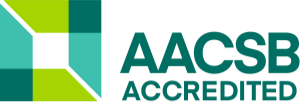
Business Accreditation
Continuous Improvement Review
Business Accreditation
The AACSB continuous improvement review (CIR) process is conducted every six years and creates an ongoing focus of continuous improvement. This signals that an AACSB-accredited institution has documented continuous improvements in support of its stated mission and strategic management plan to sustain AACSB accreditation status.
Process
On July 1, three years prior to the continuous improvement review, each institution is asked to submit a CIR application to initiate the continuous improvement review process.
No later than 60 days prior to the peer review team visit, a CIR report should be submitted via myAccreditation. The CIR report is intended to be organized around the themes of the business accreditation standards—engagement, innovation, and impact as well as the three focus areas of the 2020 standards.
Documents should be completed, saved, and submitted via myAccreditation by the predetermined due dates. If you have any questions, contact your AACSB accreditation manager.
Transition to Six Year Continuous Improvement Review Cycle
Effective beginning with visits 1 July 2026, the continuous improvement review cycle will transition from a five-year to a six-year period.






